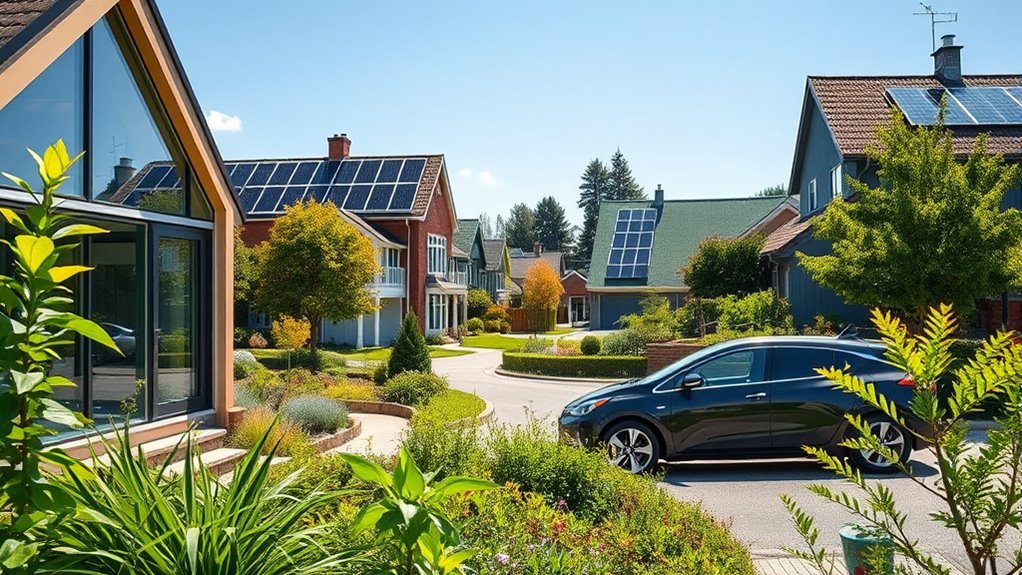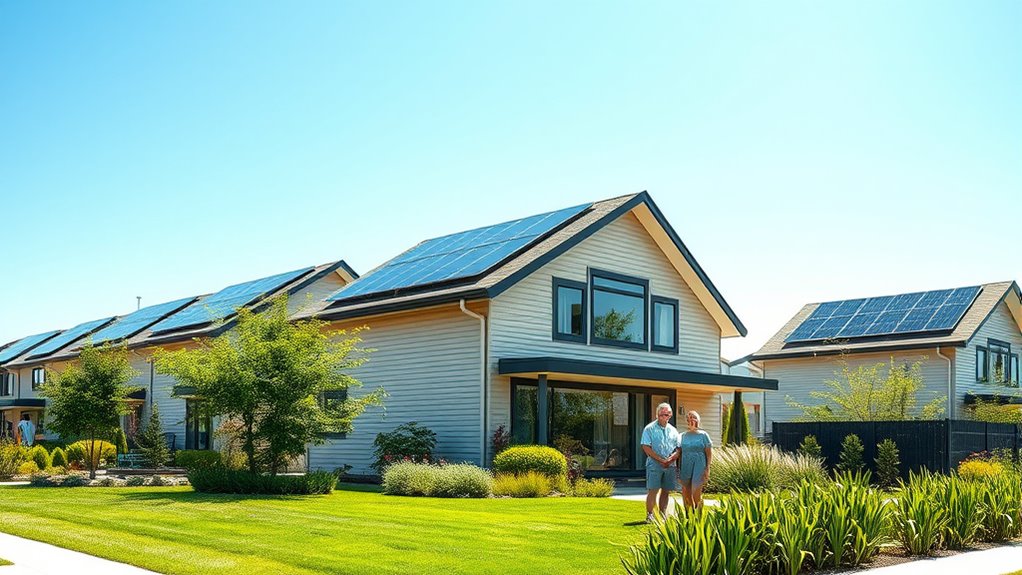Green mortgages offer lower interest rates, better terms, and incentives for energy-efficient homes. They reward upgrades like improved insulation, efficient systems, and solar panels. You can benefit from energy audits, tax credits, and rebates that make eco-friendly living more affordable. However, understanding how these loans work and how to qualify can be complex—so exploring the details could help you make smarter financial and environmental choices.
Key Takeaways
- Green mortgages offer lower interest rates for homes with high energy efficiency.
- Meeting energy standards can qualify homeowners for better mortgage terms.
- Energy audits identify upgrades that improve efficiency and eligibility for incentives.
- Solar incentives and rebates help reduce upfront costs of eco-friendly upgrades.
- Combining incentives with green mortgages lowers overall borrowing costs and enhances home value.

Are you looking for a way to make your home more environmentally friendly while saving money? If so, green mortgages could be just what you need. These specialized loans offer lower interest rates for homes that meet certain energy efficiency standards. By financing energy-efficient upgrades or new eco-friendly properties, you not only reduce your carbon footprint but also enjoy financial benefits. Many lenders now consider the energy performance of your home when determining mortgage terms, giving you an incentive to make greener choices.
One of the first steps to qualify for a green mortgage is understanding the available solar incentives in your area. These incentives can substantially offset the costs of installing solar panels, making it easier to upgrade your home’s energy system. Federal, state, and local programs often provide tax credits, rebates, or low-interest loans that reduce your upfront expenses. When combined with a green mortgage, these incentives help lower your overall borrowing costs while increasing your home’s energy efficiency. Plus, many lenders require an energy audit before approving the loan, ensuring your home meets specific efficiency standards.
An energy audit is a critical part of the process. It involves a professional assessment of your home’s energy use, identifying areas where improvements can be made. During the audit, auditors evaluate insulation, windows, HVAC systems, and appliances to determine how much energy your home consumes and where you might save. Afterward, you receive a detailed report with recommended upgrades, some of which may be eligible for solar incentives or other rebates. Taking these steps can boost your chances of qualifying for a green mortgage and securing favorable interest rates. Understanding your home’s energy efficiency rating can also help you identify the most impactful improvements.
Conclusion
By choosing a green mortgage, you’re not just securing a lower rate—you’re stepping into a sustainable, savings-filled sanctuary. Embrace energy-efficient upgrades that boost your home’s beauty and brilliance, benefiting both your budget and the planet. With every eco-friendly enhancement, you paint a picture of progress and purpose. So, take the leap, leverage your leverage, and let your home’s green glow grow, guiding you toward a brighter, better, and more balanced tomorrow.
Hi, I’m Emma. I’m the Editor in Chief of Tiny House 43, a blog all about tiny houses. While tree houses are often associated with childhood, they can be the perfect adult retreat. They offer a cozy space to relax and unwind, surrounded by nature. And since they’re typically built on stilts or raised platforms, they offer stunning views that traditional homes simply can’t match. If you’re looking for a unique and romantic getaway, a tree house tiny house might just be the perfect option.










